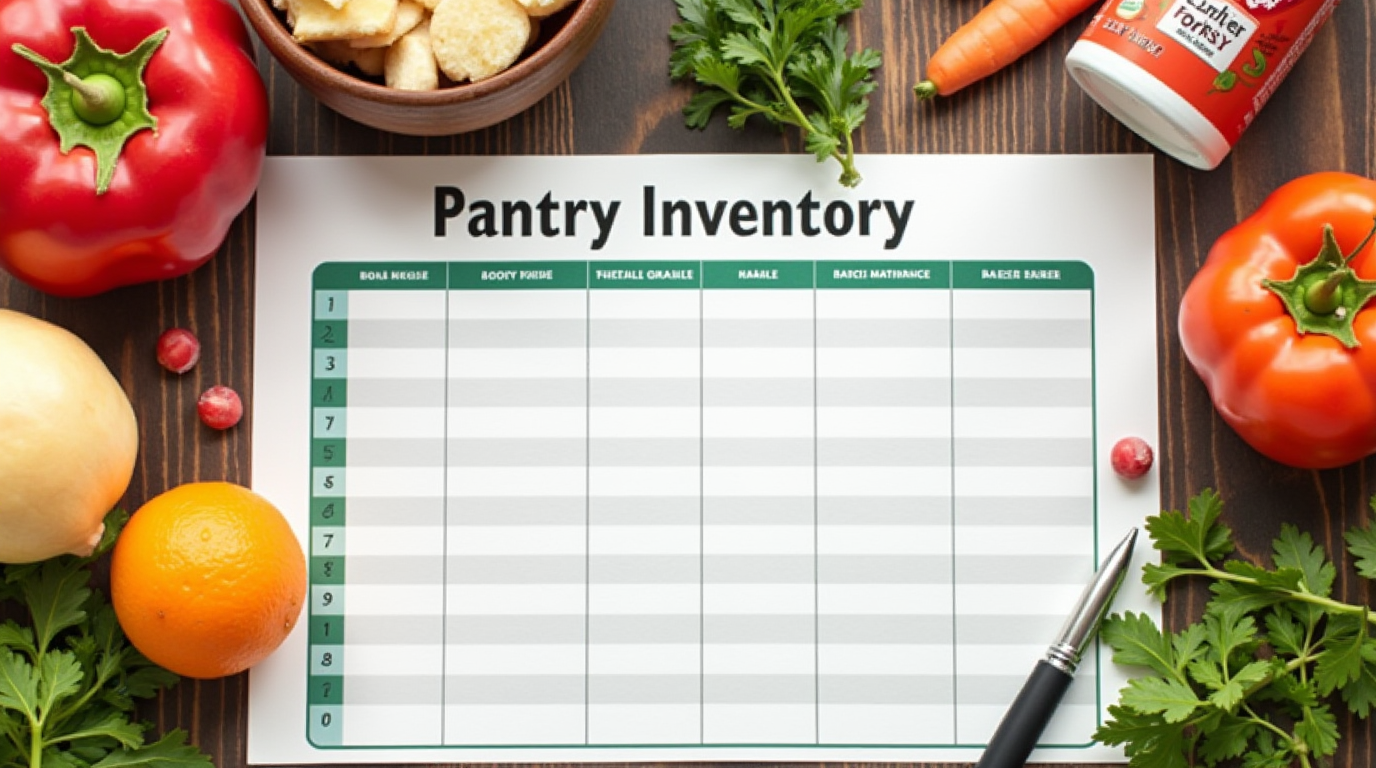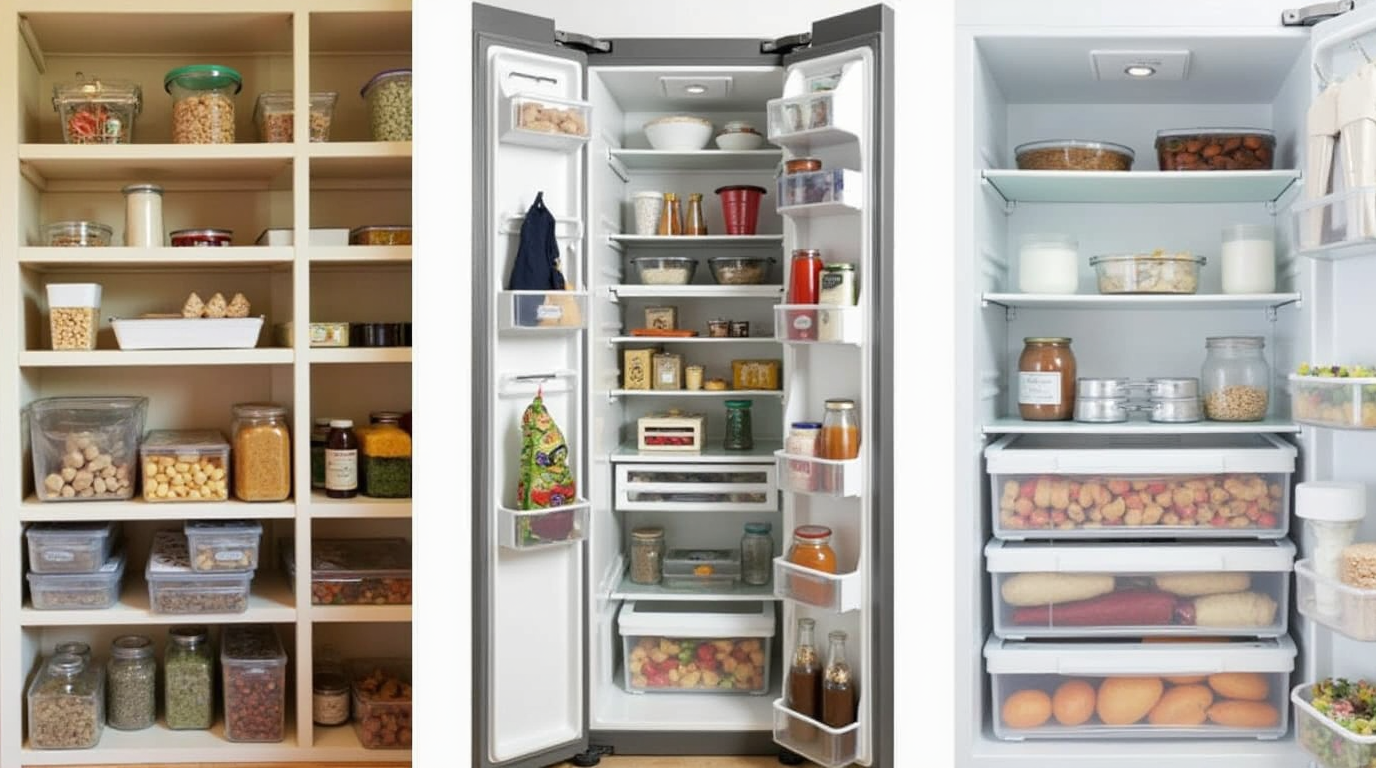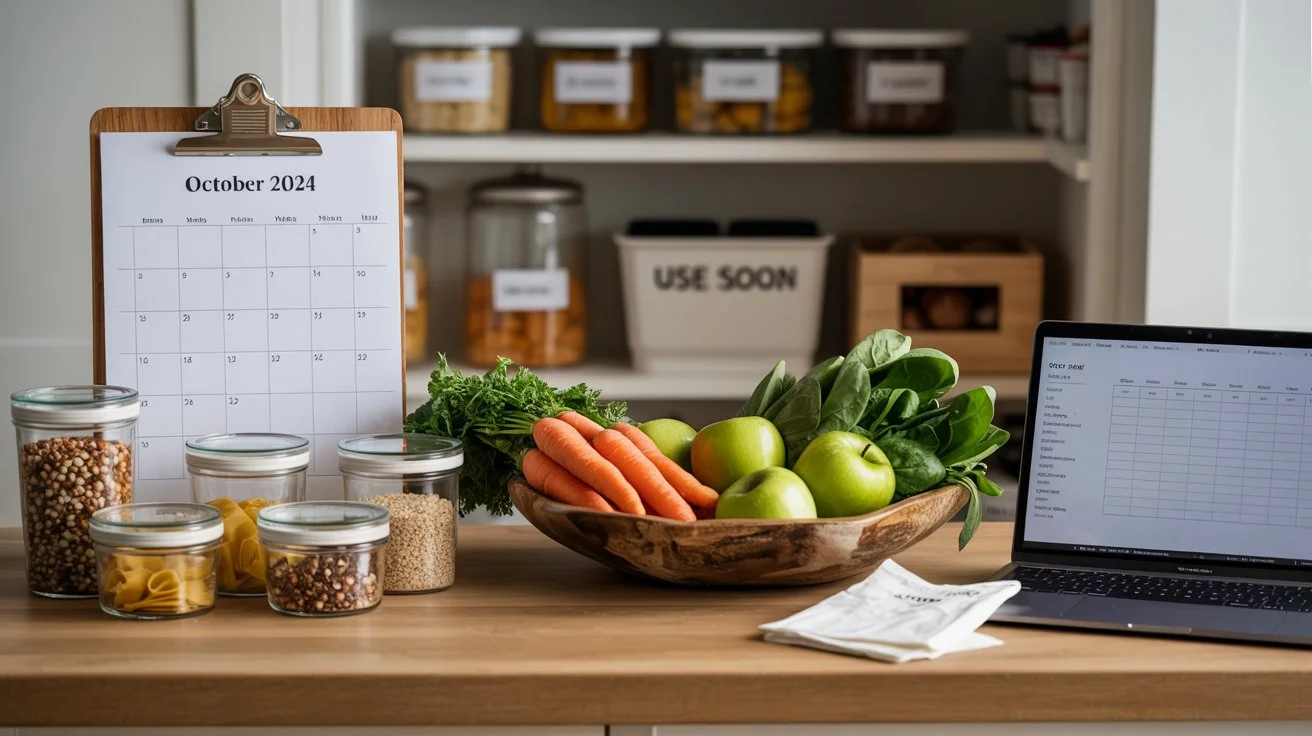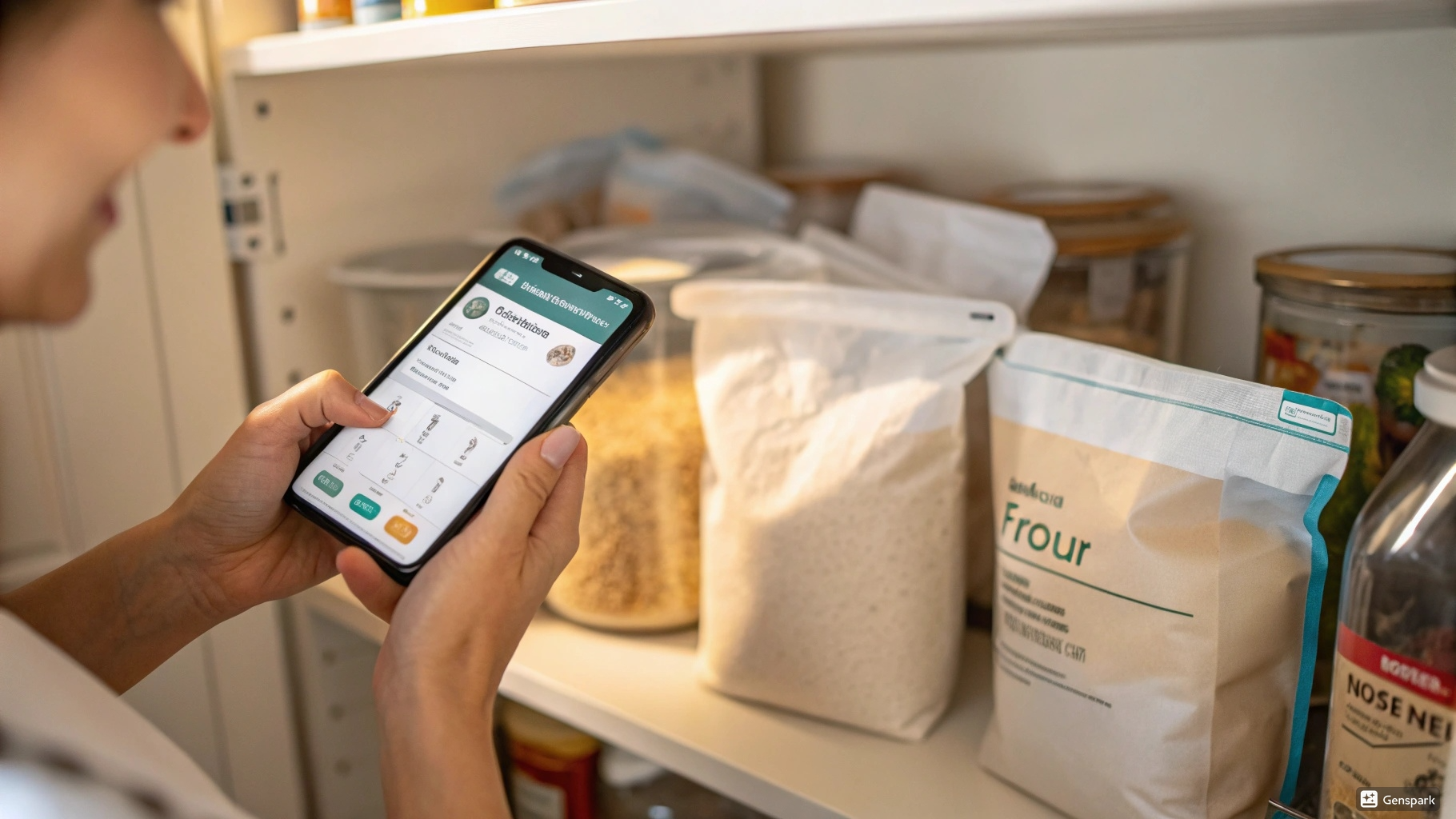How To Make A Pantry Inventory List To Save Time And Money.
Ever stand in front of your pantry, feeling that familiar wave of uncertainty wash over you? You know you bought pasta last week, but where is it? Are you sure you’re out of sugar, or is it just hiding behind that giant bag of flour? And please, oh please, tell me you don’t have three open bags of the same snack crackers!
That moment of pantry confusion? It’s more than just annoying. It often leads to wasted food because items get lost and forgotten, and it definitely leads to wasted money when you buy duplicates of things you already own. The good news is, you don’t need fancy gadgets or complex systems to fix this. You just need to learn how to make a pantry inventory list.
Creating a simple pantry inventory list is one of the most effective steps you can take towards a more organized kitchen, less food waste, and significant savings on your grocery bill. It’s a fundamental skill for anyone looking to get a handle on their home food supply. Can a simple list really do all that? Yes, and we’re going to show you exactly how to make one that works for you, saving both your precious time and hard-earned money. Welcome back to Paantry.com, where we love making your kitchen life simpler!

Why Making a Pantry Inventory List is Your Kitchen Superhero
Think of your pantry inventory list as your secret weapon against kitchen chaos and budget woes. It’s a simple tool with powerful results, directly impacting your time and money.
Stop Wasting Food (and Your Money!)
This is perhaps the most compelling reason to create a pantry inventory list. When you have everything written down, you know what you have and, crucially, you can include expiration dates. This makes it so much easier to spot items that need to be used soon, preventing them from becoming a science experiment at the back of your shelf. Less food in the trash means more money staying in your pocket. It’s a win-win! Keeping track of those expiry dates is a game-changer for reducing waste.
Grocery Shopping Gets Way Easier
Impulse buys and duplicate purchases are budget killers. With a clear pantry inventory list in hand (or on your phone), you go to the grocery store knowing exactly what you need and, more importantly, what you don’t need. This focused approach means less wandering the aisles and fewer unnecessary items ending up in your cart. Your shopping trips become faster and significantly cheaper. It’s the first step to How to Create a Smart Shopping List.
Meal Planning Becomes a Breeze
Staring into a full pantry but feeling like you have nothing to cook? That’s a common symptom of not having a clear inventory. When you know exactly what ingredients you have, it becomes effortless to plan meals around your existing stock. This saves you time trying to figure out what’s for dinner and helps you use up what you have on hand before it goes to waste. It integrates perfectly with Meal Planning for Busy Families.
Discover Forgotten Treasures
We’ve all done it – bought something, put it away, and completely forgot about it until months later. Making a pantry inventory list forces you to look at every item, bringing those forgotten treasures back into the light. Rediscovering an ingredient can inspire new recipes and means you don’t need to buy it again!
Feel More Organized and in Control
Beyond the tangible benefits of saving time and money, simply knowing what’s in your pantry brings a wonderful sense of calm and control. No more digging, no more guessing, just a clear, organized overview of your food supply. It’s a small step that makes a big difference in your daily kitchen life.
Ready to Make Your List? Choosing Your Method
The beauty of a pantry inventory list is its flexibility. There’s no single “right” way to make one. The best method for you is the one you’ll actually stick with! Here are some popular options:
The Classic: Pen and Paper
Sometimes the simplest tools are the most effective. Using a dedicated notebook, a binder with printable sheets, or even just a few notecards can work wonderfully.
Simple Spreadsheet (Digital Basic)
For those comfortable with a computer or tablet, a basic spreadsheet in programs like Google Sheets or Excel is a step up in digital organization.
Dedicated Note-Taking Apps
Your smartphone already has built-in tools that can serve as a basic digital pantry inventory list. Apps like Apple Notes, Google Keep, or Evernote allow you to create lists, use checkboxes, and easily edit on the go.
Ultimately, peek into your own habits. Are you a pen-and-paper person, or do you always have your phone handy? Choose the method that feels most natural and easiest for you to maintain consistently.
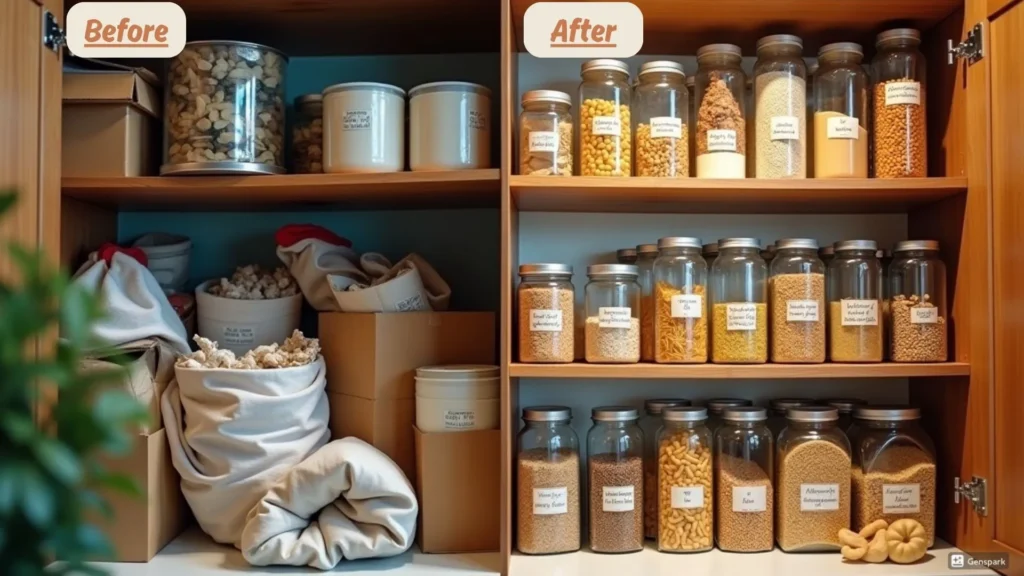
Step-by-Step: How to Make a Pantry Inventory List That Works
Once you’ve picked your tool, it’s time for the main event: actually creating your pantry inventory list! Don’t feel overwhelmed; you can break this down into manageable steps.
Gather Your Supplies
Grab your chosen notebook and pen, open your spreadsheet on your laptop, or have your phone note-taking app ready. It’s also a good idea to have a separate pen or marker to use in the pantry for jotting down things as you go, especially if you’re using a paper list.
Go Through Your Pantry, Shelf by Shelf
This is where the magic (and maybe a little mess!) happens. Tackle your pantry section by section. To be truly thorough, it can be helpful to actually take everything out of one shelf or section at a time. This way, nothing gets missed at the back.
What to Write Down for Each Item
For every single item you encounter, you’ll want to note down the essential information on your pantry inventory list:
Organize Your List (Categorize!)
As you’re adding items, group them! Creating categories on your pantry inventory list makes it much easier to scan and update later. You can use headings in your notebook, create different tabs in your spreadsheet, or use titles in your notes app for sections like:
Organizing your list by category should ideally mirror how you organize your physical pantry, making cross-referencing simple. Pantry Organization Basics.
Initial Purge (Optional but Recommended)
As you’re going through everything, take a moment to check for anything that is clearly expired, damaged, or that you know you’ll never use. Get rid of it! This declutters your physical pantry and keeps your list accurate from the start.
Place Your List Strategically
Once your initial list is complete, make sure it’s easy to access. If it’s a paper list, tape it inside a pantry door, hang it on the fridge, or keep it in a kitchen binder you use frequently. If it’s digital, bookmark the spreadsheet or keep the app icon easily accessible on your phone’s home screen. The easier it is to access, the more likely you are to use it.
Keeping Your Pantry Inventory List Up-to-Date
Creating the initial pantry inventory list is a great first step, but the real magic happens when you keep it updated. It’s a habit that pays off big time!
Update When You Use Items
The moment you take the last can of beans or finish a box of cereal, make a quick note on your list. Cross it off on paper or adjust the quantity digitally. This takes seconds and keeps your inventory accurate in real-time.
Update After Grocery Shopping
As you put away your new groceries, add them to your pantry inventory list. Note the item name, quantity, and expiration date. Doing this as you unpack ensures you don’t forget anything.
Schedule Regular Reviews
Even with diligent updates, it’s easy for things to get missed. Schedule a quick 5-10 minute review of your pantry and list every week or two. This is a good time to double-check quantities, look for nearing expiry dates, and make sure everything is accurate.
The “FIFO” Rule (First-In, First-Out)
Your pantry inventory list helps you implement the “First-In, First-Out” method. This simply means using older items before newer ones. When you add new groceries, place them behind existing stock of the same item. Your list helps you identify those older items so you can grab them first, reducing waste.
Conclusion
Learning how to make a pantry inventory list might seem like a small task, but it’s a foundational step that unlocks significant benefits for your kitchen and your wallet. By taking the time to document what’s in your pantry, you gain the power to stop wasting food, make smarter grocery choices, simplify meal planning, and enjoy a greater sense of organization and control.
Whether you choose a simple notebook, a spreadsheet, or a basic note-taking app, the key is to create a system that works for you and commit to keeping it updated. A well-maintained pantry inventory list truly is your kitchen superhero, ready to save you time and money, one item at a time! Getting your pantry inventory sorted is a cornerstone of effective Kitchen Management.
FAQs
Q: How do I handle bulk items or things I decant into containers?
A: Note the item (e.g., “Pasta – Penne”) and the estimated quantity (e.g., “approx. 1/2 container”). When you refill the container, update the quantity and note the new expiry date from the bag/box you used to refill it.
Q: What if my pantry items are stored in different places?
A: Include a “Location” column or section on your list. Note whether the item is in the main pantry, garage, basement freezer, etc.
Q: My list feels overwhelming! How can I simplify it?
A: Start basic! Just list the item name and quantity. Once you’re consistent with that, add expiry dates. You can gradually add complexity (like location or categories) as you get comfortable. Don’t try to do everything at once.

